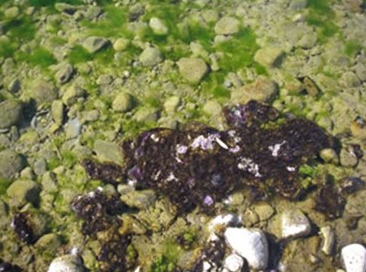Butcher’s Dam still unsafe for dogs
Anna Robb
22 April 2022, 6:30 PM
 If in doubt stay out of the water at Butcher's Dam to keep pets safe. PHOTO: Joy Bennett Photography
If in doubt stay out of the water at Butcher's Dam to keep pets safe. PHOTO: Joy Bennett PhotographyToxic algae blooms were still present at Butcher’s Dam at the last inspection by Otago Regional Council.
The bacteria is known as cyanobacteria, and it can produce natural toxins, known as cyanotoxins, which can be a threat to humans and animals when eaten, licked, or when water containing the toxins is drunk.
Otago Regional Council Science manager Tom Dyer said the persistent warm weather, with little rainfall has remained favourable to algal growth.
“Toxic algae blooms can happen in any waterway, at any time of the year, so it’s important that people learn how to recognise these algae and practice caution around lakes and rivers. If in doubt, stay out.
“In lakes and ponds it looks like pea soup, and in rivers it looks like black-brown tar on rocks and in mats on the riverside.
“For most of the year, these algae are present in smaller amounts, and it’s only in the right conditions that they bloom and can cause issues.”
Tom said cyanobacteria thrives in warm, nutrient-rich conditions and when river flows are lower than normal.
Anyone experiencing a reaction from contact with toxic algae should seek urgent medical attention.
If you spot any signs that a dog may have consumed toxic algae, such as lethargy, muscle tremors, fast breathing, twitching, paralysis and convulsion, you should treat the situation as an emergency and get help from a vet immediately.
To learn more about potentially toxic algae, including how to identify algal blooms in rivers and lakes, see the factsheet.
To report algal blooms in Otago lakes and rivers, contact the pollution hotline: 0800 800 033.

Mat forming potentially toxic algae washed up on the waters edge. PHOTO: Land Air Water Aotearoa



